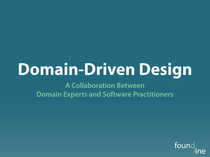In a previous post, What You Need to Know About the Semantic Web, I shared my letter to Harvard Business Review’s editor about their recent semantic web article. I realized after I made that post that I should probably have addressed the difference between the Semantic Web (a proper noun) and the semantic web (lower-case). The Semantic Web is a formal extension to the World Wide Web that attempts to add semantic data to the web. There are all sorts of terms and acronyms associated with the Semantic Web such as the Resource Description Framework (RDF) and the Web Ontology Language (OWL).
The semantic web (lower-case now) is a more loosely defined term. Generally it refers to a variety of efforts to make the existing web more semantic. The Semantic Web is certainly one part of the semantic web. However, there many other semantic web efforts other than just the Semantic Web project. These efforts often overlap, intertwine, and compete.
My personal favorite semantic web related project is Microformats. Microformats start with making existing web content semantically structured, instead of structured for presentation. See my previous entry on Plain Old Semantic HTML (POSH) for more information on this concept. Microformats then use HTML markup (i.e. elements, classes, ids) to define data structures based on existing formats. For example, the hCard Microformat “is a simple, open, distributed format for representing people, companies, organizations, and places, using a 1:1 representation of vCard (RFC2426) properties and values in semantic HTML or XHTML.” There’s at least one browser extension that can extract hCard data from web pages. I’d be surprised if search engines haven’t already started using this semantic data to better index content.
Another very interesting Microformats related project is XFN (XHTML Friends Network). In Jonathan Butler’s recent blog post on CRM, VRM, and the tip of an iceberg he highlighted Tom Ilube’s statement that “the semantic web would cut out the intermediary and restore control of personal information to the individuals who are its true owners.” XFN is a great example of this in action. It allows individuals to define their relationships simply using hyperlinks. Taken to an extreme, a global graph can be made of all of these relationships making the “walled gardens” of existing social networking sites obsolete.





2 Comments
Learn RDFa. RDFa is set to become the W3C’s standard for embedding metadata into web pages. This is the key to unlocking the true power of linked data. RDFa speaks the native tongue of the Semantic Web, RDF. This creates immediate benefits liked linked data, mixing vocubularies (think an artist music track and their FOAF file in one line) and creating custom vocabularies.
http://ysearchblog.com/2008/06/24/yahoo-chats-with-semantic-web-expert-ben-adida/
# What advantages does RDFa provide compared to microformats
Microformats fields can’t easily be shared across microformats, and all microformats must go through a centralized approval process to make sure no conflicts arise.
RDFa doesn’t have vocabulary conflicts: data fields, e.g. “title” can be reused by anyone, and there’s never any confusion as to what a given field means, since fields are, in fact, URLs. Entirely different types of data can share fields, which is exactly what applications need for extensibility. Multiple data items can be published on a single web page and, in contrast with microformats, relationships between the data items can be easily expressed.
@konterkariert As I said before, Microformats and RDF don’t have the same scope and their goals are only somewhat overlapping. RDFa looks very interesting and an attempt at comparison to Microformats would show a few interesting differences. Microformats assert that metadata should be visible and it doesn’t look like RDFa really cares about this one way or the other. RDFa is certainly more extensible than Microformats (again, the scope question) however I’d recommend checking out Poshformats.
Certainly more is possible with the Semantic Web (as defined by the W3C) than Microformats. I am very interested the W3C’s Semantic Web vision and I think it will be very successful. However, I also believe that the semantic web (lower-case) is more likely to first become a mainstream reality through Microformats. Microformats provide a clear path to the semantic web from where we are now by using existing standards and encouraging best practices that web developers should be using anyways – mainly semantic (X)HTML.
One Trackback
[…] my last post about the semantic web I mentioned the XFN project which allows individuals to define their relationships to others simply […]